Fuseproject has given form to Kind Humanoid, an AI-driven bipedal robot that wants to help
Human assistance robot Kind Humanoid steps out for the first time, shaped by Yves Béhar and Fuseproject and powered by AI, with a friendly face and mechanised limbs that can perform a variety of physical tasks
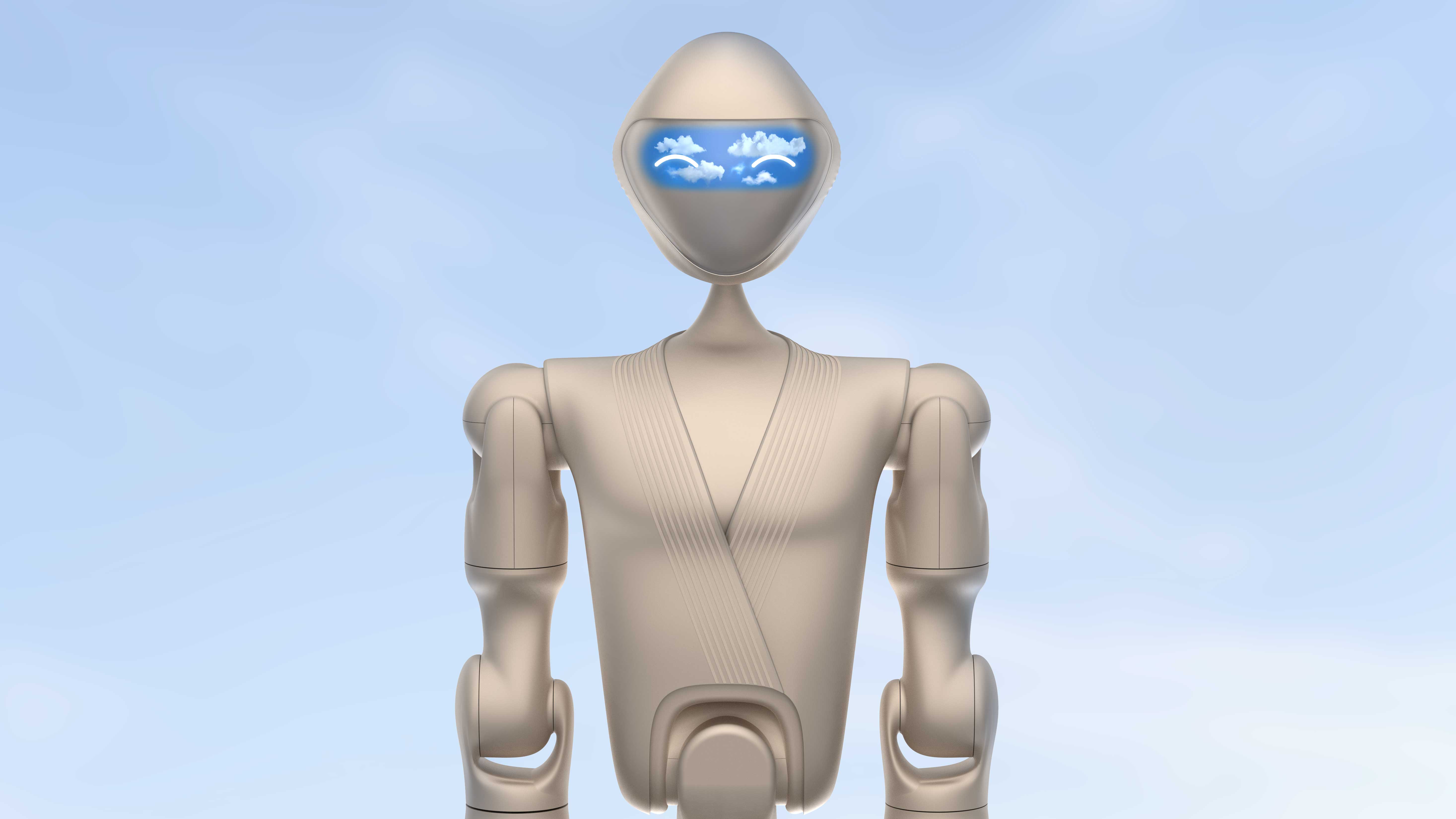
As the world continues to debate the pros and cons and unintended consequences of the current round of sophisticated LLM-based AIs, the industry itself is content to plough on with its relentless quest to shape the future. Whether its Meta’s Orion glasses, the new breed of pocketable and wearable AI assistants, or even the relentless push towards embedding Gemini or Apple Intelligence in absolutely everything, you can sure of a binary split between the controversy and convenience of the technology.
The as-yet-unfulfilled spectre of AGI - Artificial General Intelligence – hovers above everything. Should this technology ever come to fruition (a long-stated goal of companies like OpenAI and Meta), then humanity is going to want to package it up in ways that are friendly, non-threatening and actually useful.
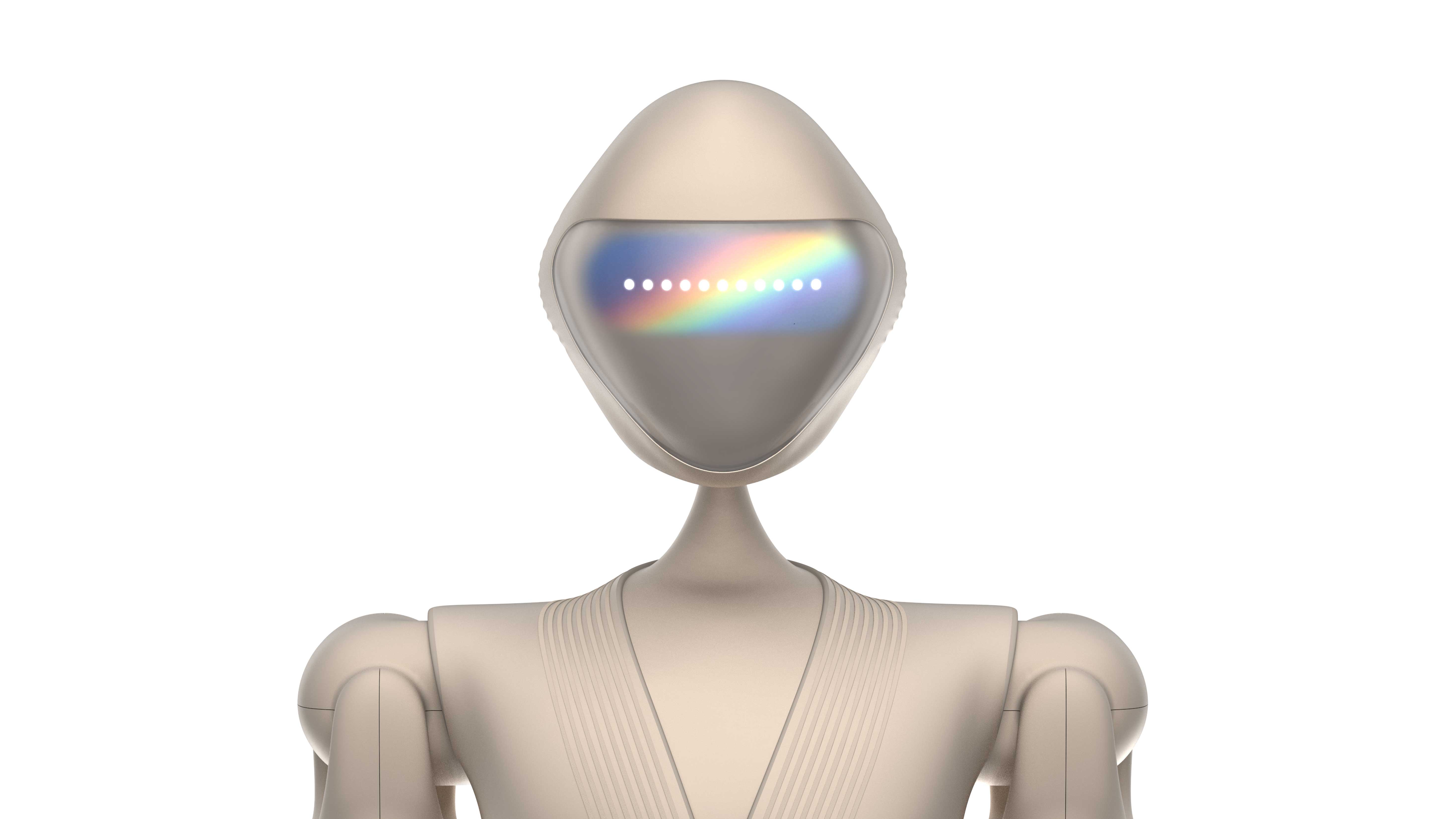
Kind Humanoid's diamond-shaped head contains an expressive facial screen
Many of the world’s robots use some form of AI to process their paths through life, whether it’s sorting, tracking, moving or working out which repetitive task to perform. Pair a robotic device with a digital assistant like Siri or Alexa, or even lifelike conversational flow of ChatGPT or Gemini and you have the first building blocks of what could be perceived as an intelligent companion. That’s the premise behind a lot of off-the-shelf devices you can buy today, offering simple interactions and information to hand, provided you’re in an environment that wouldn’t challenge a Roomba. Devices like the Moxie robot offer a sophisticated semblance of sentience, and that’s good enough for most of us.
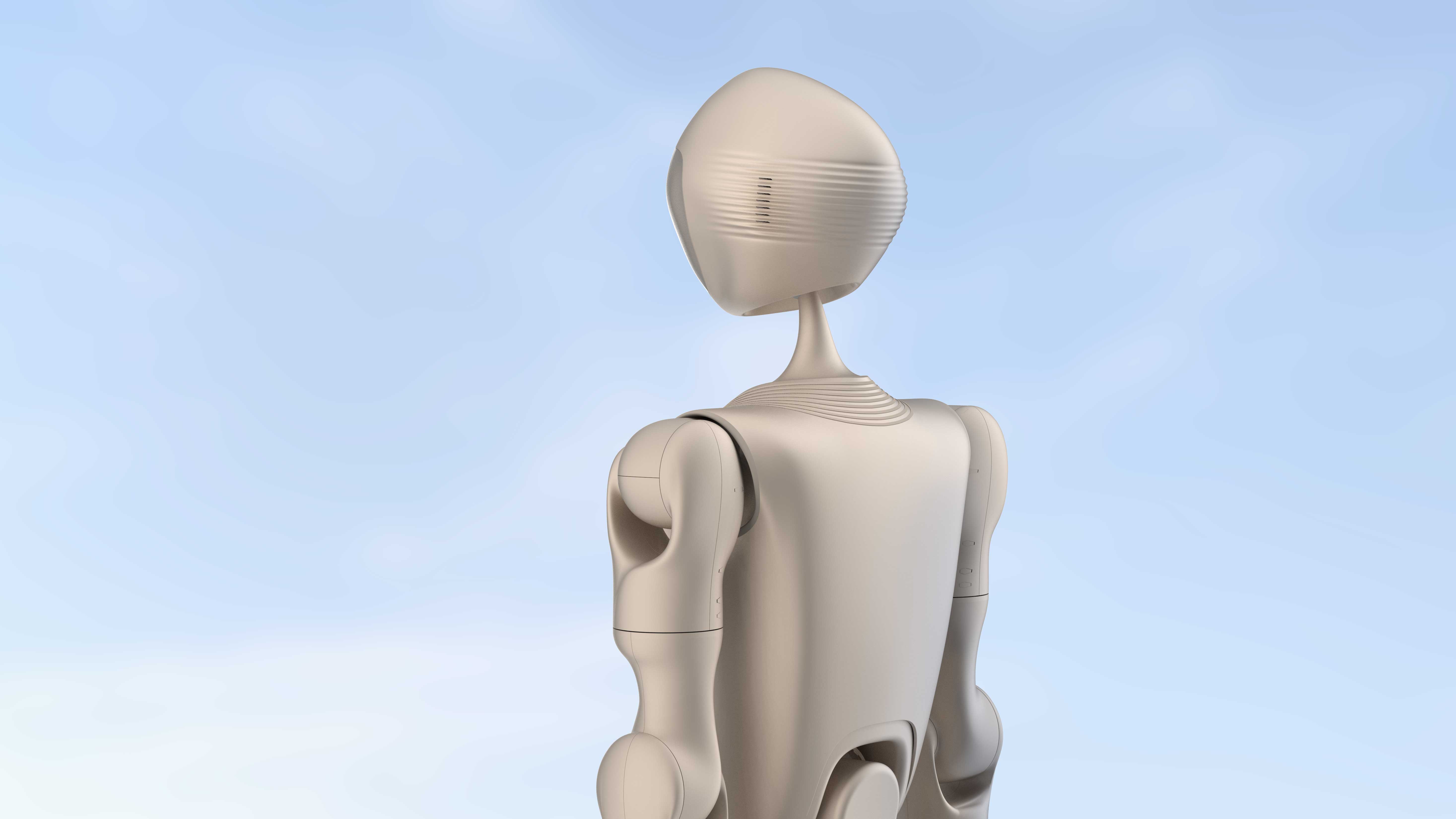
Kind Humanoid by Fuseproject
But what about so-called unstructured environments? Enter Kind Humanoid, a Silicon Valley start-up that wants to put the very latest AI into a life-size humanoid robot body, finally achieving parity between the sidekicks of sci-fi and the real world. Its purpose? ‘To engage with people in their homes, communities, and public spaces,’ rather than the controlled environment of the factory of warehouse, where it can perform everyday tasks, from gardening to elder care.
So far, so ambitious, especially since the timeline - and even the viability - of an all-purpose AGI is still very much in flux. But given that the Large Language Models that underpin current AI are becoming more sophisticated all the time, the idea of pairing LLM-driven analysis with physical actions was the basis of Kind Humanoid’s pitch. To all intents and purposes, it’s an AI that can step into the real world and do what it is told. Leaving aside all the potential ramifications of such a technology, as start-up are wont to do, Kind Humanoid wanted their robot to have a friendly, welcoming face. To achieve this, Founder Christoph Konstall tapped a design firm with broad experience of the emerging tech sphere, Fuseproject.
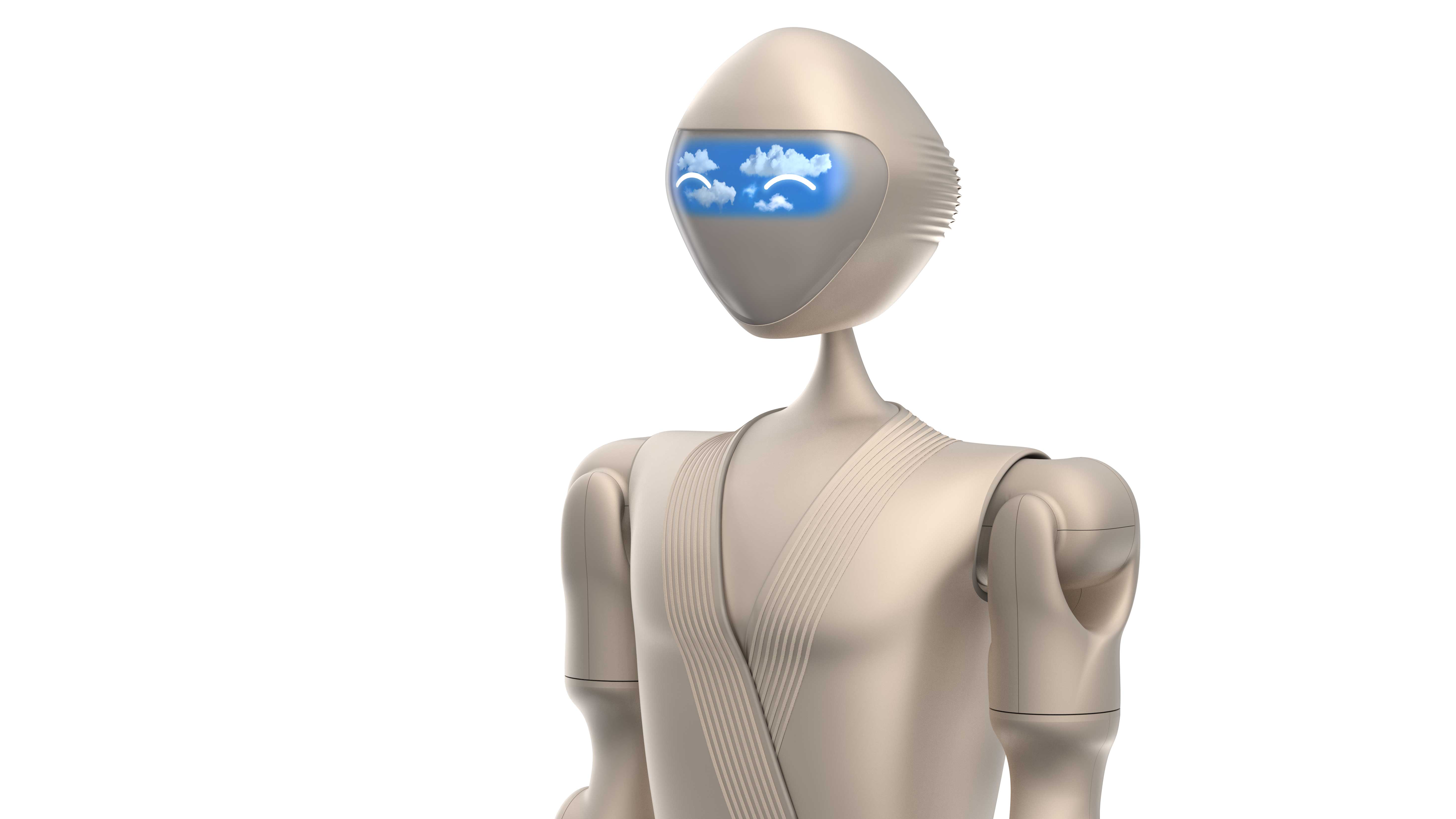
Kind Humanoid is shaped as if it's wearing a kimono
Yves Béhar’s agency, which also gave life to the Moxie robot, was tasked with cladding the electronic sinews and intestines of Kind Humanoid’s prototype with a body that conveyed humanity, simplicity and friendliness. ‘In an emerging landscape of faceless and intimidating robots, we sought to immediately differentiate Kind Humanoid with an inviting and expansive expression,’ says Béhar.
The studio drew on the Surrealist movement to create a ‘face’ that can provide ‘an inviting and expansive expression,’ with backgrounds inspired by Rene Magritte’s mysterious and playful still lives and portraits. ‘A soft diamond geometry is used for the face, with the eye area delineated as a window to the Humanoid’s facial expression,’ Béhar explains, ‘We designed a series of screens that express a mood or feeling, such as clouds passing by or an earthly landscape.’
Receive our daily digest of inspiration, escapism and design stories from around the world direct to your inbox.
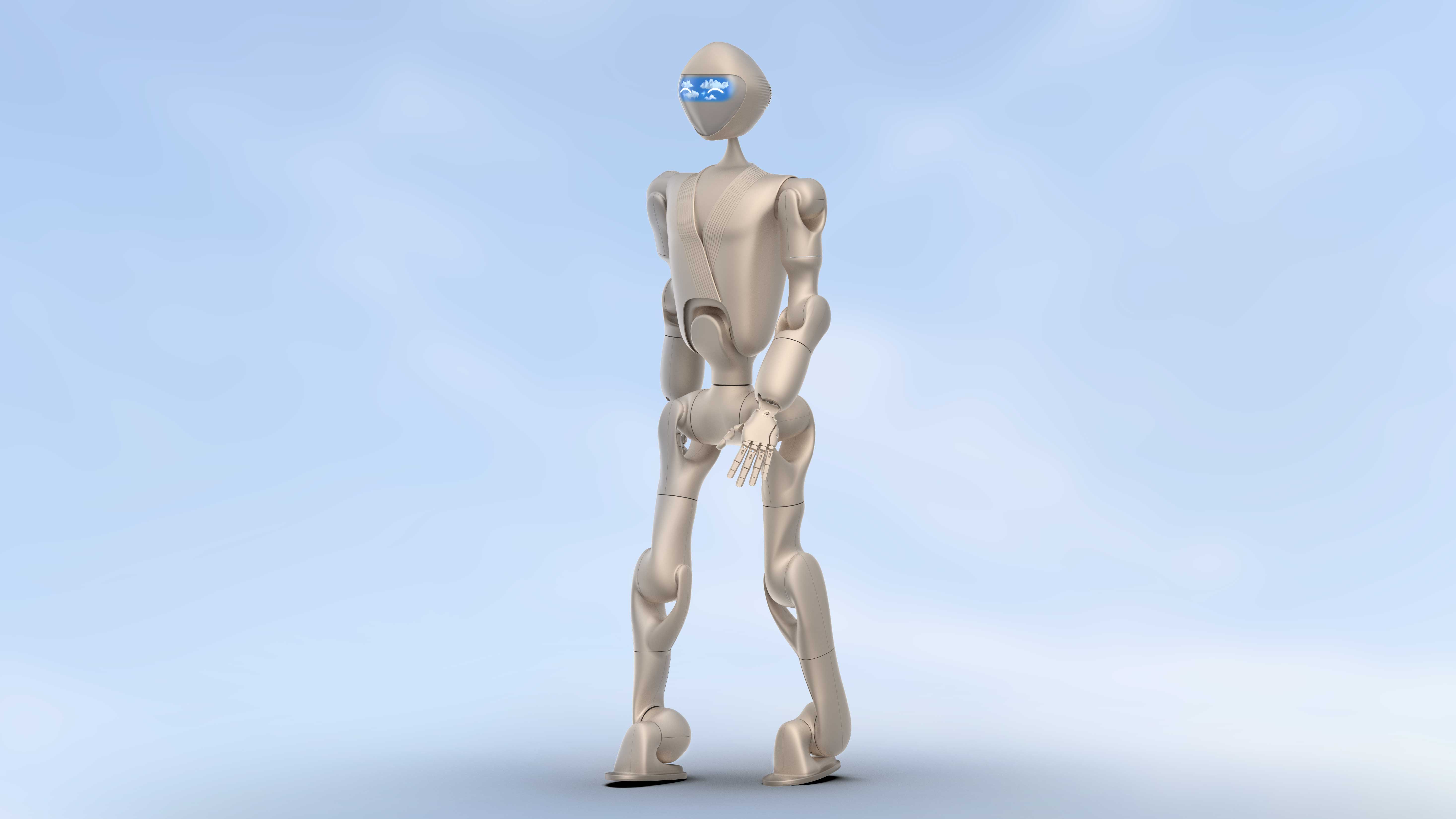
Walk on by: Kind Humanoid by Fuseproject
A more immediate impression is made by the physical form of the robot itself, and here Fuseproject combined human proportions and physicality with futuristic forms. ‘The [robot’s] torso is shaped to suggest clothing, such as a v-cut shirt reminiscent of a kimono,’ the designer says, ‘These details are visual and tactile and are intended to give the robot a general-purpose feel to operate in unstructured environments such as one’s home.’
Torso and limbs are muscular and sculpted, yet shaped to support and cloak the specific physical systems that make Kind Humanoid mobile. As a result, what you see is very much a robot, informed as much by our collective cultural memory of what such a device should look like, thanks to a century of science fiction creativity. Even the colour, light bronze, gives off LucasFilm vibes.
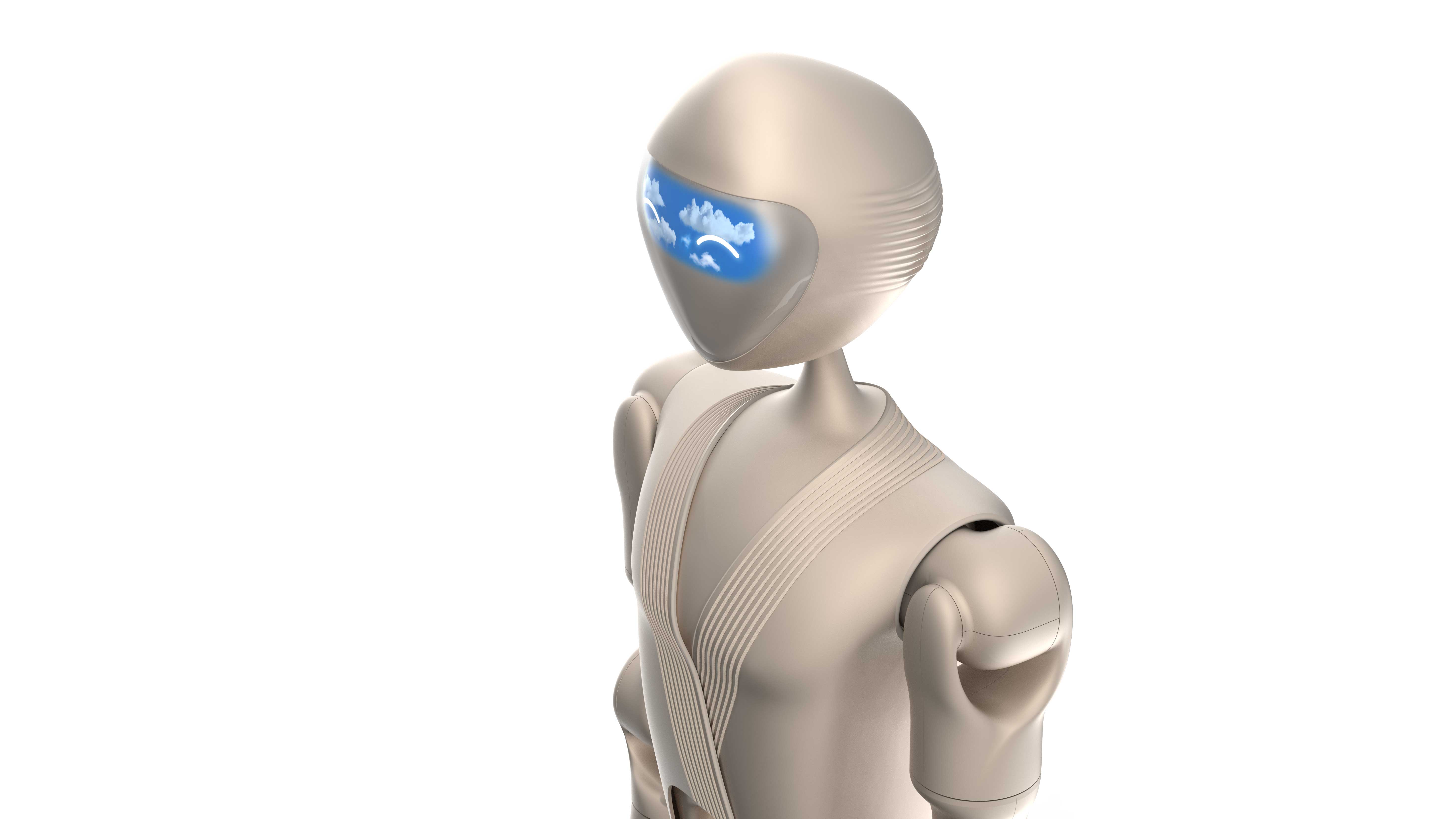
Kind Humanoid by Fuseproject
‘We believe the head shape and subtle body and clothing details, as well as the surrealist eye screens make Kind Humanoid better adapted to interact with nice humans,’ Béhar says, although the proof will very much be in the pudding. Right now, Kind Humanoid is still stumbling around at the edge of the uncanny valley, waiting for us to warm to it as both object and service.
Fuseproject has done its best to shape the best robot for a world that doesn’t yet know how to react to one. Familiarity with Kind Humanoid could breed contempt or contentment, depending on how sophisticated the software becomes.
Jonathan Bell has written for Wallpaper* magazine since 1999, covering everything from architecture and transport design to books, tech and graphic design. He is now the magazine’s Transport and Technology Editor. Jonathan has written and edited 15 books, including Concept Car Design, 21st Century House, and The New Modern House. He is also the host of Wallpaper’s first podcast.
-
 The White House faced the wrecking ball. Are these federal buildings next?
The White House faced the wrecking ball. Are these federal buildings next?Architects and preservationists weigh in on five buildings to watch in 2026, from brutalist icons to the 'Sistine Chapel' of New Deal art
-
 Georgia Kemball's jewellery has Dover Street Market's stamp of approval: discover it here
Georgia Kemball's jewellery has Dover Street Market's stamp of approval: discover it hereSelf-taught jeweller Georgia Kemball is inspired by fairytales for her whimsical jewellery
-
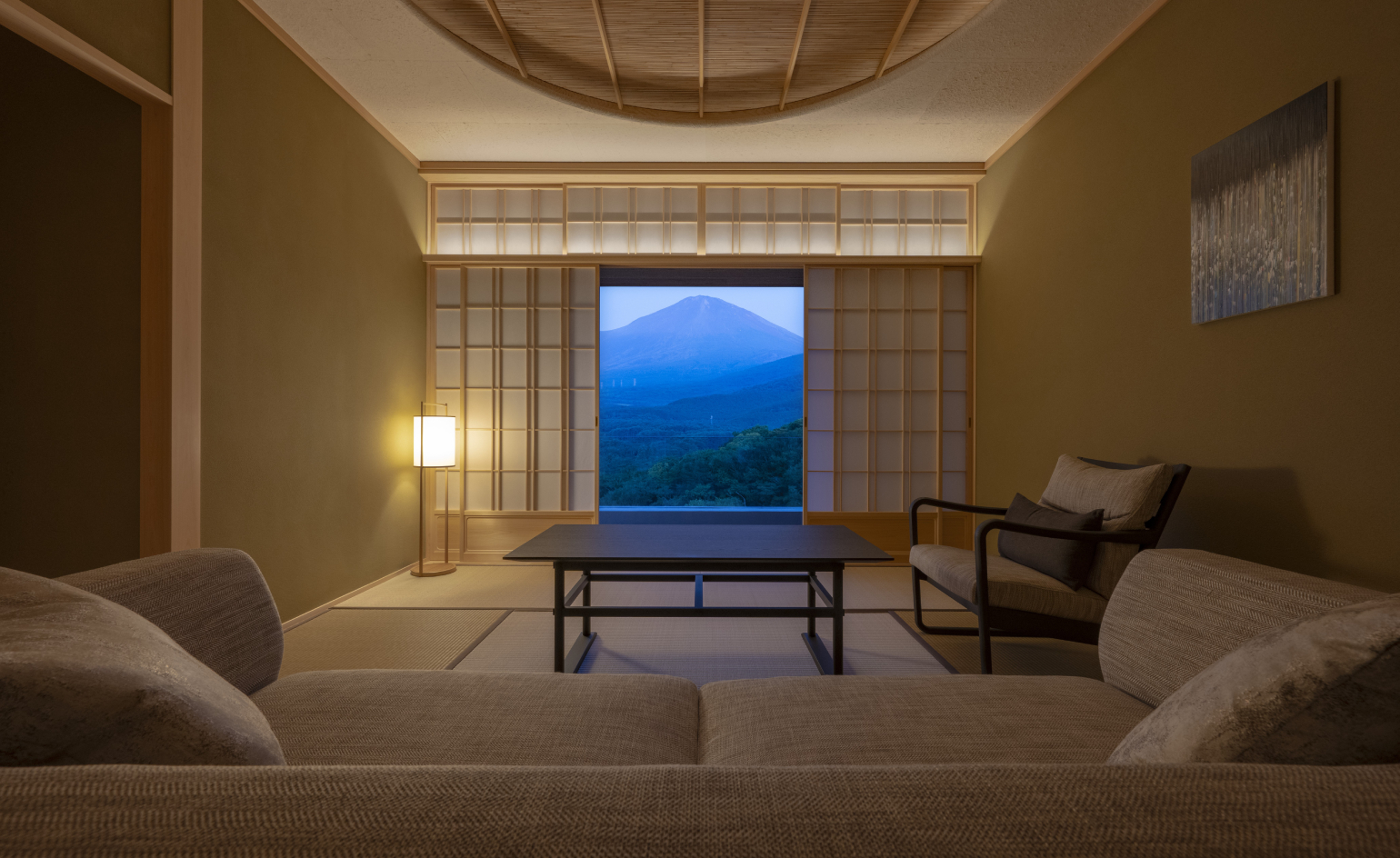 The best way to see Mount Fuji? Book a stay here
The best way to see Mount Fuji? Book a stay hereAt the western foothills of Mount Fuji, Gora Kadan’s second property translates imperial heritage into a deeply immersive, design-led retreat